
Olfaction theory has a long history of controversy. The vibration mechanism was first proposed by Dyson in 1938 to describe odorant molecule vibrations from 1500-3000 cm-1 followed by Wright in 1954 over the range 100-700 cm-1. Both vibration theories were based on the FIR region of the EM spectrum - the higher frequencies associated functional groups of the odorant molecule while the lower frequencies with the vibrations of the molecule as a whole. FIR stands for far infrared and EM for electromagnetic. The shape mechanism formulated in 1949 based on Linus Pauling's lock and key mechanism superseded the vibration theories and today remains the mainstream theory. When Buck and Axel published their Nobel Prize winning research on the olfactory receptors in 1991, the G-protein receptors were used for olfaction. Since all types of G-protein receptors currently known are activated through binding of molecules with highly specific conformations, or shape, it was assumed that olfactory receptors operate in a similar fashion. Current work on shape theory focuses on neural processing, rather than the specific mechanism between odorant and receptor that generates the original signal However, Luca Turin revived the olfaction controversy by proposing the G-protein-coupled receptors in Pauling’s lock and key mechanism were actually measuring molecular vibrations [1] using phonon assisted inelastic electron tunneling.
However, current olfaction mechanisms have a fundamental problem. Both lack a source of EM energy to signal the G-protein receptor that the odorant molecule is in the nose. For example, EM energy in the form of laser radiation could, if available excite the odorant molecule to emit its unique spectral content as the signal for G-protein recognition. By the Pauling’s shape mechanism, the odorant molecule must first fit in the receptors’ binding site. Turin’s vibration mechanism [1] not only must follow the shape mechanism in this regard, but electron tunneling is far more complex because electrons cannot travel through the odorant molecule unless a vibration energy mode is compatible with the difference in energies between two energy levels on the G-protein receptor.
In contrast, the source of EM energy in QED induced radiation depends on the QM constraints on the thermal kT energy absorbed by the odorant molecule upon collision [2] with the nose surface. QED stands for quantum electrodynamics, k for Boltzmann’s constant, T for absolute temperature, and QM for quantum mechanics. Unlike classical statistical mechanics, QM precludes the odorant molecule upon leaving the nose surface from conserving the excess kT energy by an increase in temperature. Instead, conservation proceeds by QED inducing the conversion of the excess kT energy to non-thermal EM emission given by its unique IR spectrum from 0 to 3000 cm-1. Hence, QED induced radiation allows the odorant molecule to signal the G-protein receptors of its presence in the nose.
Comparisons are made between QED induced spectrum of the odorant molecule and other olfaction theories. Indeed, olfactory receptors need not be activated through binding of molecules with highly specific shape, although contact is required in the QED mechanism to absorb kT energy from the collisions with nose surface. Of more fundamental significance, Pauling’s long standing shape-based molecular interactions without a source of EM energy are placed in question. Moreover, Marcus theory that defines energetics but lacks a source of EM energy to activate electron transfer on which Turin’s vibration mechanism is based may also be superseded by QED radiation. Indeed, Turin’s argument that the G-protein receptors discovered by Buck and Axel actually measured molecular vibrations, rather than responding to molecular keys that work by shape may be extended to the EM spectrum signal of the odorant molecule induced by QED radiation. There is no need for complex phonon assisted electron tunneling as the QED induced EM spectrum is a far simpler QM mechanism. In fact, QED induced radiation spectra is the same as Turin’s odor character encoded in receptors tuned to different vibration frequencies, but differs in that the absorption spectrum of the odorant molecule to FIR thermal kT energy explains why some odors are stronger than others at the same concentration. Given that the EM spectrum of the odorant molecule is uniquely defined by QED induced radiation, a causal relationship with odor allows unification of smell by EM radiation with that by sight and sound. Press Release
Today, the status of olfaction finds basis in the premise that the brain during evolution encoded a linear correlation between odor and odorant vibration or shape, the failure of which only proves the correlations encoded were non-linear. We like to think a linear correlation between of odor with vibration or shape parameter is required to explain smell, but the brain obviously was conditioned to correlate each and every odor separately independent of other odor. In the alternative, conditional encoding requires the odorant’ signal to always be the same, thereby favoring vibration theories relying on their unique EM spectra produced upon contact with the GPCR compared to the inaccuracy in fitting the odorant to the GPCR shape.Paper and Press Release
References
1. Brookes, J. et al., “Could Humans Recognize Odor by Phonon Assisted Tunneling?”, PRL, 98, 038101, 2007.
2. Prevenslik, T. See http://www.nanoqed.org at “Smell and the Nose”, 2010.
Molecular Dynamics in Tribology
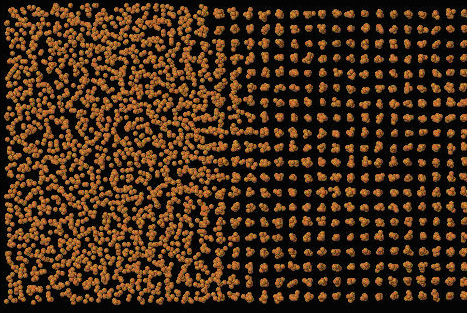
Molecular Dynamics (MD) simulations of heat transfer based on classical statistical mechanics allow the atom to have thermal heat capacity through kT energy. Here k is Boltzmann’s constant and T absolute temperature. MD simulations of the bulk using submicron computational boxes with periodic boundary conditions are therefore valid representations of the bulk where the atoms do indeed have thermal kT energy.
However, MD is also performed today assuming atoms have thermal kT energy in discrete nanostructures which are not periodic. The above picture shows melting temperatures applied on the left with the right maintained at freezing. The simulation is discreted and submicorn. But lacking periodicity, MD solutions of discrete nanostructures are invalid by QM. Here QM stands for quantum mechanics. Unlike statistical mechanics, QM forbids atoms in discrete submicron nanostructures to have heat capacity, and therefore the nanostructure cannot conserve EM energy by an increase in temperature. Without temperature changes, thermal conduction is precluded at the nanoscale. Instead, conservation proceeds by the emission of non-thermal QED induced radiation to the surroundings. QED stands for quantum electrodynamics. See Paper and Press Release
Specific Heat by Planck’s Photons

Specific heat by Debye’s phonons leading to unphysical conclusions of reduced thermal conductivity in thin films and violations of mixing rules in nanofluids may be avoided by treating the nanostructures having atoms emitting photons similar to the walls of an evacuated cavity as embodied in Planck’s derivation of the blackbody relation. Unlike Debye’s phonons having macroscopic specific heat at the nanoscale, specific heat by Planck’s photons vanishes, the consequence of which is that thin film conductivity remains at bulk as film thickness is reduced and nanofluids obey standard mixing rules. See this page at "Zero Specific Heat' and "QED Induced Heat Transfer", 2010.
Specific heat in a crystal by photons finds basis in Planck’s derivation of blackbody radiation in an evacuated cavity except for the reduced speed of light in the crystal. Unlike Debye’s phonons, Planck’s photons are consistent with QM in that the inexhaustible energy source for atomic vibrations observed in FIR spectra is the thermal kT energy of the atom - the source of all EM radiation. QM stands for quantum mechanics, FIR for far infrared, k for Boltzmann’s constant, T for absolute temperature, and EM for electromagnetic.
In the 1950’s, lack of experimental FIR data did not allow Raman to support his argument that the specific heat of a crystal is determined by averaging the specific heat for all FIR spectral lines using Einstein’s theory of characteristic vibrations. Experimental specific heats over the temperature range from 15 to 300 K were used to compute an effective average characteristic vibration frequency based on Einstein’s specific heat. For silver, aluminum, and lead, Raman’s average frequencies were 102, 163, and 35 cm-1. However, the average frequencies based on Planck's specific heat for silver, aluminum, and lead were found to be higher at 175, 222, and 333 cm-1, respectively. To explain this disparity, one must note that FIR spectra are not so simple to be represented by a number of discrete spectral lines. Typical FIR spectra show spectral lines superimposed on a broad background thereby holding in question Raman’s averaging the specific heats computed from discrete spectral lines. Lower average frequencies are expected in subsequent papers by including the average Planck specific heat of the broadband background by integrating the normalized absorbance over the range of appropriate wavelengths.
See Paper and Press Release
Memristors - The Fourth Element?
The 3 fundamental elements for electrical circuits are the resistor, capacitor, and inductor, all of which are passive capable of storing or dissapting but not generating EM energy. But in 1971, Leon Chua proposed a 4th passive element element called the memristor. The memristor is a nanoscale thin film that remembers the amount of current that has passed through it. Hence, the memristor behavior depends on the time integral of current - otherwise called charge. When current flows through the memristor, the resistance increases, but when current flows in the opposite direction, the resistance decreases. If the current is stopped, the memristor remembers the last resistance it had before the current stopped. See Paper
Attempts to understand how charge is produced in the memristor behavior have focused on the movement of oxygen vacancies and charged defects in oxide barriers. Stan Williams of HP Labs reports the actual resistance of the titanium dioxide memristors changes depending on the amount of voltage and the time the voltage has been applied. Williams says it is only at the nanoscale that the behavior of the memristor is detectable. At macroscopic sizes, the memristors behave like ordinary resistors, where resistance is equal to the voltage divided by the current. See Paper
Contrarily, the QM effect in memristors differs from that in the literature. EM energy in the form of electrical power P(t) is converted to QED photons that charge the memristor. The power P(t) = V(t)*I(t) = R(t)*I(t)^2, where V(t) is the voltage, I(t) is the current, R(t) is the resistance, and t is time. By QM, P(t) is converted to QED photons inside the memristor that by the photoelectric effect produce charge q(t) and free electrons inside the memristor. Since P(t) is independent of the direction of I(t), the q(t) is always being produced, at least until charge build-up stops the current flow. Charges are attracted to the negative V(t) terminals while free electrons are attracted to the positive V(t). Therefore, charge q(t) build-up reduces the resistance R(t). But R(t) is always positive, and can increase or decrease depending on the q(t) level in the memristor. See Press Release For updated memristor theory, see Paper and Press Release
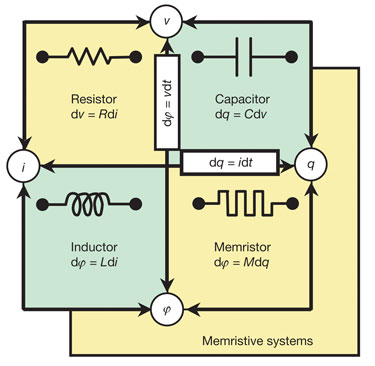
Tribology Tester with UV Source

Anti-wear additives incorporated into lubricants form surface films that protect underlying surfaces from damage by rubbing. In automobile engines, the common additives are zinc dialkyldithio-phosphates (ZDDPs). Although in use for over 60 years, the mechanism by which the ZDDP film forms is unknown. Experiments show ZDDP films rapidly form submicron (~ 100 nm) thick irregular shaped pads of long polyphosphate chains separated from each other by regions of shorter polyphosphate chains. Currently, the ZDDP pads are thought to form by exotic cross-linking induced by changes in zinc bonding at extreme pressures in excess of 150,000 bar.
Photochemical reactions differ by allowing the ZDDP pads to form by cross-linking of polyphosphate chains at relatively low temperature and pressure, but require a source of radiation. The proposed photochemical source is a consequence of QM where the pads are induced by QED to produce EM radiation at UV levels or beyond. QM stands for quantum mechanics, QED for quantum electrodynamics, EM for electromagnetic, and UV for ultraviolet. QM requires the submicron pads to have vanishing specific heat, and therefore frictional heat absorbed in rubbing cannot be conserved by an increase in temperature. Instead, conservation proceeds by creating QED photons at levels beyond the UV inside the ZDDP pads that in combination with zinc as a catalyst allow pad growth by the photochemical cross-linking of polyphosphate chains.
Ongoing development of a Tribology Tester with a UV source shown above is intended to show ZDDP films may form by cross-linking at ambient pressure and temperature by photochemical reaction, thereby avoiding the need for exotic cross-linking by changes in zinc bonding under extreme pressures. The top of a UV-C transparent window is rubbed by a steel cylinder with a thinb film of oil and ZDDP in the interface. A UV-C lamp in the housing passes light through the window to the ZDDP film. After rubbing for 5-10 minutes, the window is removed and sent to the SEM for pad thickness measurements. Press Release
The Tester is comprised of:
1. UV-C window – Fig 1
2. Top plate and housing – Fig 2
3. UV-C lamps (2 provided) – Fig 3
4. Contact cylinder and holder – Fig 4
5.. Base plate – Fig 5
Italian Cold Fusion
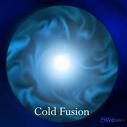
The recent announcement that scientists Rossi and Focardi at the University of Bologna produced cold fusion from electrically heated nickel powder under pressurized hydrogen gas is consistent with QED induced radiation in NPs. By this theory, EM energy in the form of electrical heat is converted to QED photons inside the NPs. Similar to creating photons of wavelength L by supplying EM energy to a QM box having sides separated by L/2, the QED photons spontaneously form under the TIR confinement of the NP. Since NPs have high surface to volume ratio, the absorbed EM energy is deposited almost entirely in the TIR mode tangential to the NP surface, and therefore the EM confinement although momentary is self-sustaining. As long as EM energy is supplied to the NP there is no limit to the number of QED photons that may be accumulate in the NP, and therefore the EM energy inside the NPs continues to increase to the 2.6 MeV/ atom level at which time fusion occurs upon the transmutation of 6.15MeV - 62Ni to 8.7MeV - 63Cu. See Paper and Press Release
Excitons in Nanoscale Systems
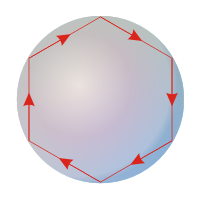
Excitons as free carriers at the macroscale are created by photoexcitation, the free carriers comprising unbound electrons in the conduction band leaving holes in the valence band. If the dynamics of the Coulomb attraction between the electron and hole is negligible, then the pairs are free carriers. But at the nanoscale, the dynamics of the exciton are strongly influenced by the physical size and shape of the material. Therefore, a deciding property of excitons in nanoscale systems is that the exciton size is dictated not by the electron–hole Coulomb interaction, but by the spatial confinement of the physical dimensions of the nanostructure that accentuates many of interesting physical properties, exposing them for examination. See Nature Review Article – Excitons in Nanoscale Systems
Although the claim is made excitons in nanoscale systems depend on the physical dimensions of the nanostructure, and not by electron–hole Coulomb interaction, the confinement mechanism by which this occurs is not presented. Instead, confinement of carbon nanotubes (CNTs) and quantum dots (QDs) is described only by their characteristic dimension, i.e. their diameter and radius, respectively Ibid. Moreover, exciton energies at the macroscale are no higher than a few 100 meV, but are far higher at the nanoscale, Even so, the QD and CNT absorption spectra shows energies that extend far beyond the ultraviolet (UV). Exciton energies simply cannot explain the absorption spectra of CNTs and QDs.
Instead, QED induced radiation is proposed as the source of high absorption beyond the UV observed for CNTs and QDs that provides the source that allows excitons to be created by photoexcitation. QED stands for quantum electrodynamics. Indeed, QED radiation is the consequence of QM that requires the heat capacity of the nanostructure to vanish under the TIR confinement in nanostructures. QM stands for quantum mechanics and TIR for total internal reflection. TIR confinement constrains the absorbed energy tangential to the surface rather than the volume of the nanostructure because of the high surface to volume ratios in nanostructures. The tangential TIR mode is illustrated in the above figure. See Paper and Press Release
Nanowires by QED Radiation
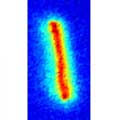
Nanowires (NWs) have numerous applications including switching in electronic circuits, lasers, and optical information transfer. But for brevity emphasis here is placed on light-matter interactions in ZnO wires as optical waveguides. See seminal Paper
Of fundamental importance at the nanoscale is whether the mechanism of light-matter interaction is by the widely accepted notion that free excitons comprising pairs of electrons and holes created by direct photoexcitation by energetic photons OR by hypothetical exciton-polariton pairs resulting from the coupling of light with an exciton. See Press Release on Excitons at the Nanoscale.
However, if the exciton-polariton picture is valid, the notion of photons in crystals is considered insufficient, a statement that is difficult to understand because photons certainly exist at least momentarily in the sold state. The exciton-polariton is thought formed as the photon emitted by an electron-hole pair within a cavity is reabsorbed back into the same electron-hole pair before interacting with anything else. Although possible in vacuum cavities, reabsorption is unlikely in the NWs of solid state ZnO cavities. Nevertheless, it is somehow claimed that it is impossible to discriminate between the photon and the electron-hole pair because of the rapid cycling of energy back and forth between them Ibid
But the notion of the exciton-polarton is irrelevant if there is a source of energetic photons created at the nanoscale. Photoexcitation by energetic photons is likely to only produce free excitons that are lost to the continuum thereby precluding any electron-hole pair to exist from which any photon may be subsequently be reabsorbed by the same electron-hole pair. If so,
What is the source of the energetic photons in NWs?
Source of Energetic Photons
QED induced radiation is the proposed source of energetic photons that creates free excitons in NWs.. Indeed, NWs like quantum dots (QDs) and carbon nanotubes (CNTs) and other nanostructures show very high absortion beyond the ultraviolet (UV) allowing excitons to be created by photoexcitation. QED stands for quantum electrodynamics. QED radiation is the consequence of QM that requires the heat capacity of the nanostructure to vanish under the TIR confinement. QM stands for quantum mechanics and tir for total internal reflection.Unlike classical heat transfer that allows the atom to have thermal kT energy at the nanoscale, QM requires the heat capacity to vanish. Lacking heat capacity, absorbed energy cannot be conserved by an increase in temperature, and therefore conservation proceeds by the QED induced creation of photons inside the nanostructure. TIR confinement constrains the absorbed energy tangential to the surface the NW rather than volume because of the high surface to volume ratio. Typically, lasers are used to excite many in a transparent liquid, but QED radiation is induced any time energy of any form is absorbed at the nanoscale, including joule heating of individual NWs. See applications of QED radiation on this page, 2009-2011.
Discussion
A comparison of QED radiation and exciton-polariton theories in relation to ZnO nanowires is given in Press Release , the conclusions of which are as follows.
Conclusions
1. Light-matter interaction in NWs is by free excitons created by direct photoexcitation from highly energetic QED induced radiation. Hypothetical exciton-polaritons resulting from the coupling of light with an exciton need not be invoked. Indeed, light-matter interaction of photons in crystals is sufficient to explain NW luminescence.
1. Light-matter interaction in NWs is by free excitons created by direct photoexcitation from highly energetic QED induced radiation. Hypothetical exciton-polariton pairs resulting from the coupling of light with an exciton need not be invoked.Indeed, light-matter interactioon of photons in crystals is sufficient to explain NW luminesence.
2. QED radiation comprising high energy QED photons depending only on the size of NWs explains their significant absorption spectrum beyond the UV. Hypothetical polaritons may be dismissed as the source of absorption may be dismissed because excitons, like phonons can only respond at acoustic frequencies and not at optical frequencies on femtosecond time scales.
3. Unlike exciton-polaritons, QED radiation in NWs relies on the TIR confinement of absorbed energy to create QED photons inside the NW. However,TIR confinement of photons is only momentary upon the absorption of energy and vanishes as the energy leaks to the surroundings, or is no longer supplied, i.e., if the NWs do not absorb energy, there is no TIR confinement.
4. NWs of ZnO having a band gap of 3.26 eV and diameters of 200 nm lack radial confinement and allow a large fraction of QED photons to escape the NW body. By selecting the NW diameter less than 100 nm, QED photons at the ZnO band gap may be efficiently emitted at the NW ends.
Contact Induced FIR Spectra in Insects

Unlike humans, insects evolved with a pair of antenna provided with sensilla disposed along their length. Olfaction in insects is thought to follow shape theory of smell in humans. However, like humans, olfaction is questionable because the probability of the pheromone finding the receptor on the sensilla with the perfect fit is extremely unlikely. EM communication would greatly increase the probability of the pheromone finding the receptor and enhance mating. A similar problem exists in human olfaction in the recogniton of odors where it was proposed that the FIR spectrum of the odorant is emtted upon the odorant molecule contacting the inside nose surface, the mechanism called "Contact induced FIR Spectra." See above "Chemical Sensing by QED", 2011.
With regard to moths, it is known that sexual assembly occurs the male either upwind or downwind of the female. Upwind assembly may only occur by FIR signaling while both olfaction and FIR signaling may occur in downwind assembly. Regardless, the pheromone molecules released by the female move with the wind and repeatedly contact nearby or distant surface from the male, say as the pheromone molecules bounce along the ground. Upon each contact, the scent molecules absorb thermal kT energy from the surfaces that is conserved by a burst of EM radiation given by the FIR spectrum of the pheromone. Male moths downwind of the female therefore assemble by following the trail of bursts of FIR spectra left by the pheromone molecules. See Paper and Press Release
Neuron Signaling by QED
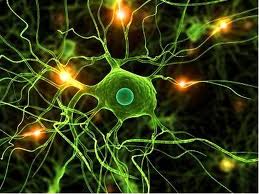
Mainstream theory of neuron signaling is based on chemical reactions at local contacts called synapses. Cells are electrically isolated from each other, the presynaptic cell separated from the postsynaptic cell by the synaptic cleft. A change in the electrical potential in the presynaptic cell triggers a release of neurotransmitters (NTs) into the cleft by exocytosis. The NTs comprise vesicles of small molecules or neuropeptides. But the NTs are submicron, and therefore may be considered nanoparticles (NPs).
There is a problem with classical biology. The cleft is 20-50 nm wide, but the NPs are larger. NPs of small molecules have diameters of 40-60 nm while those of neuropeptides are 60-250 nms. What this means is the NPs must dissolve into their NT molecules before entering the cleft. Dissolution takes time and the neuron signal is not transferred until the NT molecules bind to receptors on the postsynaptic cell.
In contrast, QED induced synapse occurs solely from EM radiation produced at the instant NPs and their NT molecules become isolated even prior to entering the cleft. The NT molecules have thermal kT energy acquired in the presynaptic cell during endocytosis, but once momentarily isolated at the surface of the presynaptic cell by exocytosis are forbidden to have thermal energy by quantum mechanics (QM). Conservation proceeds by a burst of EM radiation corresponding to the unique EM spectra of the NT molecules. Similar QED radiation producing EM radiation beyond the UV by the fragmentation of epithelial cells that damage the DNA and possibly lead to cancer was recently proposed. See this page at "Cancer by Epithelial Tissue Disorganization" and "Nanoparticle Toxicity and Cancer", 2010.
QED induced synapse is reasonably illustrated in the teleDesign video . In the simulation, the small yellow spheres represent NP molecules beginning to enter the cleft. The postsynaptic receptors shown as white spheroids just below the yellow dot NT molecules are artifacts of mainstream theory not used in QED induce radiation. Like the above figure, the flashes of light simulate the burst of EM radiation from the conversion of thermal kT energy of the NPs and MT molecules to QED radiation. Other videos more specific to QED induced radiation are planned. See Paper and Press Release
QED Induced Spindle Assembly

Spindles in cells assemble around tangled chromatin by self-organization of microtubules (MTs). In centrosomal spindles, MTs are thought catalyzed by centrosomes at the spindle poles. But his is questionable because anastral spindles having poles without centrosomes also assemble. In this paper, MTs in both chromosomal and anastral spindles are proposed to assemble by photolysis from the QED induced EM radiation emitted from the MTs themselves. QED stands for quantum electrodynamics and EM for electromagnetic.
In the cell, MTs are straight fibers while the chromatin fibers are tangled as whown in the above figure. Otherwise both fibers have diameters of about 25 nm, and as such are subject to constraints of zero specific heat capacity imposed by quantum mechanics (QM). Hence, thermal energy absorbed by the fibers from collisions of water molecules cannot be conserved by an increase in temperature. Instead, conservation proceeds by the creation of QED induced photons inside the fibers under EM confinement by total internal reflection (TIR). TIR confinement is significant and creates energetic QED photons that provide polymerization dynamics with the energy to nucleate MTs on chromatin fibers and grow MTs from tubulin by photolysis. Conversely, QED induced photolysis assists MT disassembly upon binding of severing proteins. Growth and dissasembly comptete with each other to alter the MT lenghts.
The MTs self-organize into spindles having overall diameters from 150 to 250 nm also emit QED induced radiation, thereby charging the spindles to attract negative charged MTs from the surroundings. Unlike spindle assembly by autocatalytic MT production that lacks a source of energy, QED radiation self-organizes the spindle using the thermal energy of water molecules within the cell. See Paper and Press Release
The Green Valley
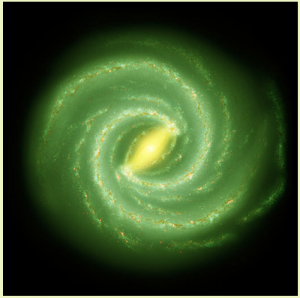
Our understanding of nearby galaxy evolution has been recently advanced by UV measurements from NASA’s Galaxy Evolution Explorer (GALEX) satellite. See Paper 1 Imaging was performed in both the NUV and FUV at 230 and 150 nm, respectively. Young stars having intense UV emission are thought to appear as a blue cloud of star forming spirals while older stars look like the sequence of red ellipticals. However, GALEX also shows light at frequencies half-way between the blue and red – the so called green valley. See Paper 2 But making color a measure of galaxy evolution is complicated by the fact that stars are occluded by cosmic dust. See Nagoya PR
Stars naturally produce cosmic dust that scatters and absorbs its emissions. Cosmic dust typically consists of submicron dust particles (DPs) from 0.005 to 0.5 microns. Indeed, it is thought the IR light observed from a star is caused by the temperature increase of the cosmic dust upon the absorption of UV photons. Astronomers assume classical physics to determine the temperature increase of the DPs upon the absorption of a single photon. However, classical physics is not valid for submicron DPs in deriving the thermal response because the heat capacity of the DPs is restricted by quantum mechanics (QM). Unlike classical physics that allows the atom to have heat capacity from the macro to the nanoscale, QM requires the heat capacity of submicron DPs to vanish. Conservation of the absorbed UV photon cannot proceed by an increase in DP temperature. Lacking heat capacity, QM conserves the absorbed UV photon by the creation of QED radiation inside the DP. See PR and Paper 3
Galaxy evolution by color is found to have nothing to do with the age of the star. Color depends on UV absorption by surrounding cosmic dust. Young stars need not emit blue light, and instead may emit red light or even IR light depending on the properties of the cosmic dust. Certainly, old stars emit less UV than new, but otherwise the color depends on the absorption of UV emission of the star by cosmic dust. Details are given in Paper 4
Non-equilibrium Green's Function

In 1822, the theory of thermal transport in solids began with Fourier’s transient heat conduction equation for temperatures in macroscopic systems. Quantum mechanics (QM) was introduced through the specific heat capacity in combination with phonons as heat carriers by Einstein and Debye in 1907 and 1912. Over the past decade, anomalous thermal response of microscopic systems prompted review of Fourier’s equation. Currently, density functional theory (DFT) combined with non-equilibrium Green's functions (NEGF) based on phonon interactions is being proposed to describe thermal transport in discrete microscopic systems.
However, QM restricts the heat capacity of microscopic systems thereby questioning NEGF thermal transport by phonons as heat carriers. Electron transport by NEGF cannot be used as an analog for thermal transport because electron transport is not affected by heat capacity. In fact, it is unlikely thermal transport in microscopic systems even exists. Indeed, QM embodied in the Einstein-Hopf relation for the harmonic oscillator precludes any and all thermal transport in discrete microscopic systems based on their submicron size alone. A typical NEGF model of molecular wires is depicted above. NEGF claims the thermal conductivity to depend on the length of the molecule. In contrast, QED theory claims there is no conduction by phonons along the molecule, and instead the Joule heat is dissipated by the emission of QED photons to the surroundings.
The problem of thermal transport in microscopic systems is not one of whether NEGF theory replaces Fourier’s equation, but rather to how to overcome the notion that conduction by phonons is the only mechanism by which thermal transport occurs at the nanoscale. Arguments that NEGF theory is verified based on agreement with experiments should be set aside because the experiments may also be explained by QED radiation. See Press Release and Paper
Redshift and the Marmet Hypothesis
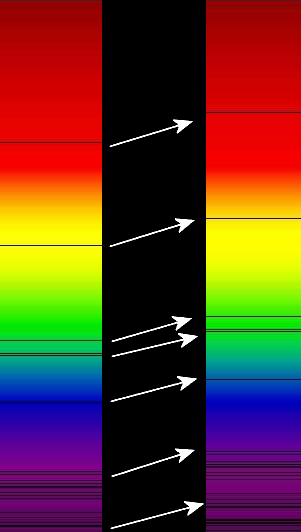
In 1929, Hubble formulated a law based on the Doppler shift that claimed all wavelengths of light from a galaxy were redshift by the same amount leading to the notion of Universe expansion. In the figure, the redshift wavelength Lo and emission wavelength L are shown on the right and left, respectively. The redshift Z = (Lo – L)/L may be rewritten as Lo-L = ZL. For the same Z, the difference (Lo – L) for L in the red is greater than in the blue. But the figure incorrectly shows (Lo-L) to be the same everywhere. You can check it out! What this means the redshift Lo depends on the emission L, and therefore a galaxy luminosity spectrum with more than 1 emission wavelength L will be redshift differently.
Recently, Marmet in a comparison of redshift mechanisms described a number of theories based on photon interactions with electrons that like the Doppler shift also redshift Lyman alpha emissions without a change in wavelength.
“Absorption by any element (H, He, atoms, molecules, dust, etc...) which has an internal structure implies a wavelength dependence resulting from resonances or absorption bands…wavelength dependent redshift mechanisms would fail to imitate a Doppler-like redshift. For this reason, a cosmological light-matter interaction producing a redshift can only be produced in elements which do not have an internal structure, such as electrons…”
Today, GALEX spectroscopic measurements of galaxy luminosities can easily test Marmet’s hypothesis whether or not the redshift in has structure. In fact, it is the cosmic dust between the galaxy emission and the observer that gives the luminosities a broadband structure. See Press Release and Paper
Vision by QED Radiation
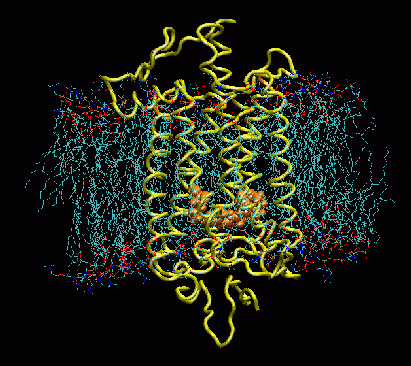
Vision under dark-adapted conditions is controlled by rhodopsin pigment molecules having an extremely high sensitivity to light. Thermal energy is thought to assist pigment activation under dark conditions, but is not quiet and produces noise. In this regard,a thermal mechanism was recently proposed to assist pigment photoisomerization. See Paper. Since the activation energy of rhodopsin is above that of dark rhodopsin, the amount of thermal energy necessary to assist pigment isomerization in the dark was estimated at about 1.2 eV. However, the Boltzmann distribution showed it is extremely unlikely that thermal energy of this magnitude can be accessed at ambient temperature. Because of this, Hinshelwood's statistical mechanics relation was adopted allowing each vibration mode in the pigment to contribute 1 unit of kT energy to the available thermal energy for pigment isomerization. At ambient temperature, kT ~ 0.0258 eV, and therefore it was concluded that about 45 vibration modes provided the necessary ~ 1.2 eV to assist pigment isomerization.
However, statistical mechanics is only applicable to the collective properties of a large number of molecules. Individual pigment molecules in non-bonded contact with rhodopsin receptors do not follow the rules of statistical mechanics. What this means is Hinshelwood's derivation allowing each vibration mode in the pigment molecule to contribute a unit of kT energy to the pigment is of questionable validity.
Unlike statistical mechanics, quantum mechanics allows the individual pigment molecule to access thermal energy upon intermittent contact with the rhodopsin receptors in the retinal membrane. See Press Release Contact occurs repeatedly as the pigment molecule vibrates against the rhodopsin receptor. Since the rhodopsin is integral with the macroscopic membrane, the rhodopsin provides a source of kT energy at body temperature for thermally activating pigment isomerization. Each time the pigment contacts the receptor it momentarily becomes a part of a macroscopic body and spontaneously acquires thermal kT energy. Upon loss of contact, however, the pigment molecule is free while still having the thermal kT energy acquired during contact. But in the free state, the acquired kT energy cannot be conserved by an increase in temperature because the pigment like any nanostructure is precluded by QM from having heat capacity. Conservation may only proceed by QED inducing the pigment molecule to emit the acquired kT energy as non-thermal radiation given by its EM spectrum, the VIS content of which randomly activating the pigment.
In contrast, olfaction by QED induced contact is similar to vision, but differs in that only FIR emission is required. Since excitation of the VIS is not required, only a single contact of the odorant with the olfactory receptor is required to produce the odorant's unique FIR spectrum that signals the olfactory receptor that it is present in the nose. For olfaction, see above at "Chemical Sensing by QED" and Press Release
Electrical Charge in Nanoelectronics
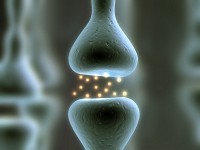
Electrical charge in nanoelectronic circuit elements – resistors, capacitors, and inductors - is explained by the quantum mechanics requirement that heat capacity vanishes in nanostructures. In the memristor, Joule heating therefore cannot be conserved by an increase in temperature. Instead, conservation proceeds by the QED induced creation of photons within the TIR confinement frequency of the memristor. QED stands for quantum electrodynamics and TIR for total internal reflection. The TIR confinement of QED photons is enhanced by the fact the absorbed energy is concentrated in the TIR mode because of the high surface to volume ratio in nanostructures. The QED photons having Planck energy beyond the ultraviolet produce excitons, the electrons and holes of which reduce the resistance of the memristor, but the resistance is recovered later in the same cycle as the electrons and holes are attracted to and destroyed by the polarity of the voltage terminals.
Earlier work on the HP memristors is described above on this page in “Memristors – the Fourth Element”. Revisions for the ICIC 2011 Conference are given in Paper and Presentation. The latest HP simulations are given in Paper that includes comments on QED heat transfer in nanowire memristors, the Ovshinsky Effect, phase-change random access memory –PCRAM, and ballistic transport in nanocontacts. Nanocars are described to illustrate the generality of QED radiation.
The figure above illustrates yet another example of QED radiation in neuron synapse. The mainstream theory of chemical signaling is replaced by EM signaling where QED induces the neurotransmitter molecules in the presynaptic cell to emit their EM spectra for recognition by the post synaptic receptors. See Paper and Presentation
Ovshinsky Effect by Quantum Mechanics
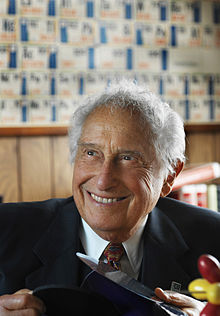
In 1968, Ovshinsky initiated scientific research in the field of amorphous and disordered materials that continues to this day. For a history of Ovshinsky's contributions to American science, see Ovshinsky The photograph of Ovshinsky above was taken in 2005. The Ovshinsky Effect occurs when the resistance of thin GST films called chalcogenides is significantly reduced upon the application of low voltage. This is of fundamental importance in phase-change random-access memory (PC-RAM) devices, the most familiar of which being the rewritable CD-RW disks.
However, the Ovshinsky Effect is not without controversy. In 1968, Ovshinsky thought the resistance of GST films is reduced by the redistribution of charge carriers; whereas, others at that time including many PC-RAM researchers today argue that the GST resistance changes because the GST amorphous state is physically changed to the crystalline state by melting from heat supplied by external heaters.
In this controversy, quantum mechanics (QM) asserts that provided the GST films are submicron the heat capacity vanishes, and therefore the heat supplied cannot be conserved by an increase in GST film temperature. What this means is switching from the high to low resistance GST states is not caused by melting from the amorphous to crystalline states. By precluding melting, QM has re-opened the controversy between the melting and charge carrier mechanisms that underly the Ovshinsky Effect.
In this regard, the Ovshinsky Effect is proposed to occur by a redistribution of charge carriers as the consequence of QM precluding conservation of heat by an increase in temperature. In fact, the charge carriers are created by QED radiation that produces excitons (holes and electrons) in amorphous GST films by the photoelectric effect. QED stands for quantum electrodynamics. See Press Release and Paper
Nano-thermometers
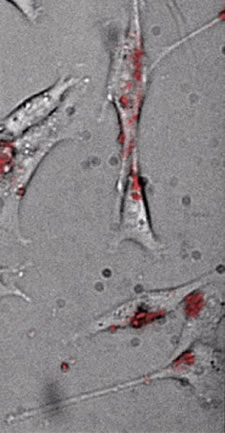
Scientists have recently reported the measurement of temperatures inside mouse cells using nano-thermometers, better called QD thermometers. QD stands for quantum dot. The QDs are sub-micron nanoparticles of semiconductor materials that are small enough to enter individual cells. The QDs are thought to increase in temperature by absorbing laser light, the temperatures of which are inferred from the phosphorescent QD emission.
However, QM requires the heat capacity of submicron QDs to vanish, and therefore any metabolic heat or laser excitation absorbed by the QD cannot be conserved by an increase in temperature. What this means is QD photon emission or Raman shift by phonon confinement may have nothing to do with the cell temperature. A clarification of what the QDs are actually measuring is required.
By the theory of QED induced radiation, the observed VIS fluorescence and IR Raman shifts are a consequence of absorbed EM energy by metabolic heat or light from laser excitation..Instead of increasing temperature, conservation proceeds by the frequency up-conversion of the absorbed EM energy to the TIR confinement frequency of the QD. TIR is enhanced by the fact QDs having a high surface to volume ratio concentrate the absorbed heat or light in their surface thereby providing the confinement necessary to create high-energy QED photons within the QD. Subsequently, the QED photons as an EM source excite the VIS fluorescence and Raman shifts. All this occurs without an increase in QD temperature.
Temperatures measured from the QD spectra by exciting the QDs not in contact with the cell with NIR light have nothing to do with the temperature of the QD thermometer itself, as QM precludes any temperature response to absorption of NIR light. However, the QDs in contact with the cell become part of a macroscopic thermal sink that maintain the QD at cell temperature even under laser excitation.
What this means is the QD temperatures are only valid if the QDs are in contact or fixed to the cell. If the QDs move, contact is lost and the laser excitation is converted to QED photons exciting VIS fluorescence and Raman modes that are independent of the cell temperature. Indeed, the change in measured temperatures by QDs that are fixed and moving may be detected. By QM, only the fixed QD response is representative of the cell temperature. In the above figure, the images of QDs shown in red are most likely moving QDs not related to cell temperature. See forthcoming Paper and Press Release
2011 Nobel Prize Mistake in Physics
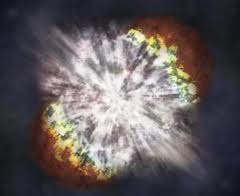
The Nobel Prize in Physics 2011 was awarded to Saul Perlmutter, Brian P Schmidt and Adam G Riess for discovering the accelerated expansion of the Universe. However, the calculation using the redshift from Supernovae that showed the Universe is expanding at an accelerated rate was a mistake because the redshift was caused by absorption in cosmic dust
The discovery of an accelerated expanding Universe was based on the redshift from type Ia Supernova (SN). Over 50 SN having light weaker than expected was taken as a sign that the expansion of the Universe was accelerating. See Press Release What this means is the Nobel prize was awarded for something not expected, for if it was expected it would not have been a scientific discovery. However, the Nobel laureates including the High Z-team working for years interpreting the redshift from SNs could not have not expected an accelerated Universe expansion, and therefore one can safely dismiss any scientific discovery. In a telephone interview with Adam Riess, recorded shortly after he was told he had won the Nobel Prize in Physics. Reiss said of the moment he realized his data were showing the expansion of the Universe was accelerating:
"I remember thinking, I've made a terrible mistake and I have to find this mistake."
Reiss did make a mistake. The redshift used in his calculations had nothing to do with the weaker light than expected from the SN, but rather was that of QED induced redshift from the SN dust. Simply put, the dust from the SN explosion made the light appear weaker than expected. See Press Release
However, QED induced redshift in dust holds in question not only observations of SN explosions, but also all astrophysical measurements that rely on Hubble redshift by the Doppler Effect. Interpreting redshifts of spectral lines based on Hubble law has grossly over-estimated distances and recession velocities. Recently, the Shaw Prize in Astronomy was awarded to Costa and Fishman for claims gamma ray bursts with redshift Z = 8.2 are the most distant explosions in the Universe. See Press Release. But like the SN observations, distances are over-estimated because of QED redshift in cosmic dust. Similarly, rotational velocities of spiral galaxies based on Hubble redshift are faster than allowed by Newtonian mechanics, and on this basis, dark matter is erroneously thought to exist to hold the galaxies together. Indeed, QED redshift in cosmic dust instead of by the Doppler Effect explains most of the problems in cosmology:
Dark Energy not needed to explain a Universe that is not expanding
Period-luminosity relation qualified in Cepheid stars
Dark Matter not involved in Gravitational Lensing
Galaxy Rotation Problem resolved without Dark Matter
No need for MOND to explain Galaxy Rotation Problem
Tolman Surface Brightness reduction by (1 + Z)
Explain the Independence of Redshift in Sunyaev-Zeldovich Effect
Light Curve dilation in Supernovae Explosions
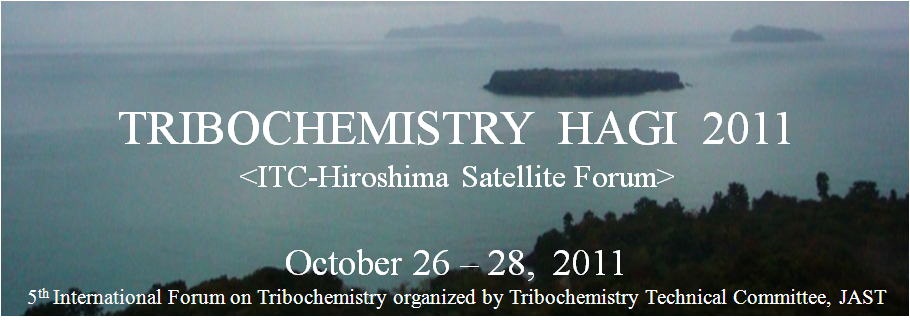
The 2011 Tribochemistry Conference was held at Hagi in western Japan. See the Technical Program. QED Radiation made both and oral and poster presentation. The oral was entitled "The validity of Heat Transfer by Molecular Dynamics".and the poster title was"Engine lubrication by UV Radiation."
Molecular Dynamics (MD) simulations of heat transfer based on classical statistical mechanics allow the atom to have thermal heat capacity through kT energy. MD simulations of the bulk using submicron computational boxes with periodic boundary conditions are therefore valid representations of the bulk where the atoms do indeed have thermal kT energy. However, MD is also performed assuming atoms have thermal kT energy in discrete nanostructures which are unambiguously not periodic. Lacking periodicity, MD solutions of discrete nanostructures are invalid by QM. Unlike statistical mechanics, QM forbids atoms in discrete submicron nanostructures to have heat capacity, and therefore the nanostructure cannot conserve EM energy by an increase in temperature. Without temperature changes, thermal conduction is precluded at the nanoscale. Instead, conservation proceeds by the emission of non-thermal QED induced radiation to the surroundings. Examples of valid and invalid MD simulations in tribology and tribochemistry are presented. See PPT Presentation
Anti-wear additives incorporated into lubricants form surface films that protect underlying surfaces from damage by rubbing. In automobile engines, the common additives are zinc dialkyldithio-phosphates (ZDDPs). Although in use for over 60 years, the mechanism by which the ZDDP film forms is unknown. Experiments show ZDDP films rapidly form submicron (~ 100 nm) thick irregular shaped pads of long polyphosphate chains separated from each other by regions of shorter polyphosphate chains. Currently, the ZDDP pads are thought to form by exotic cross-linking induced by changes in zinc bonding at extreme pressures in excess of 150,000 bar. Photochemical reactions differ by allowing the ZDDP pads to form by cross-linking of polyphosphate chains at relatively low temperature and pressure, but require a source of radiation. The proposed photochemical source is a consequence of QM where the pads are induced by QED to produce EM radiation at UV levels or beyond. QM stands for quantum mechanics, QM requires the submicron pads to have vanishing specific heat, and therefore frictional heat absorbed in rubbing cannot be conserved by an increase in temperature. Instead, conservation proceeds by creating QED photons at levels beyond the UV inside the ZDDP pads that in combination with zinc as a catalyst allow pad growth by the photochemical cross-linking of polyphosphate chains. See Poster
Comments to the PPT Presentation questioned the applicability of QM to MD simulations. The response to these comments are given in Press Release.
Near-Field Radiation Heat Transfer

Historically, Planck’s theory of BB radiation stands as one of the greatest achievements of all time in that the dispersion of the EM emission of photons with wavelength (or frequency) was shown to depend solely on the temperature of the material surface. BB stands for blackbody and EM for electromagnetic. More fundamentally, Planck’s theory also provided the basis for quantum mechanics (QM). At the macroscale, Planck’s theory has served well in predicting radiative heat transfer provided the gap or separation between heat transfer surfaces is large compared to the wavelength of the emitted thermal radiation. However, Planck never claimed his theory was applicable to the radiative heat transfer across nanoscale gaps even though high frequency photons standing across the gap are far more efficient than those for long wavelength radiation at the macroscale. In this regard, photons standing across the gap transfer heat promptly at the speed of light, and therefore Planck most likely did not include heat transfer by evanescent phonon waves moving at acoustic velocity in his theory because phonons are too slow to be of any consequence in conserving radiative heat transfer.
Claims that the Planck theory of blackbody radiation imposes a limit on the maximum radiative heat transfer between surfaces can be safely dismissed because Planck never imposed any such limit. Nevertheless, experimental data for nanoscale gaps between flat plates unambiguously show near–field enhancement of heat transfer above that given by Planck theory. In fact, the data is consistent with the QM enhancement of the near-field by standing wave photons in the theory of QED radiation. QED stands for quantum electrodynamics. Although nanoscale heat transfer is promptly conserved by standing QED photons, the tunneling of EM surface phonon polaritons between surfaces is the current theory of near-field enhancement.
The application of QED theory to near-field heat transfer in nanoscale gaps is given in Paper and Press Release. The conclusions are:
1. QED induced heat transfer provides a simple theory for near-field enhancement perfectly consistent with Planck’s QM and theory of BB radiation. Classical electromagnetics theory based on tunneling of evanescent waves by phonon surface polaritons or photons that differ conceptually from the QM inherent in Planck’s theory cannot be expected to explain near-field enhancement.
2. Near-field heat transfer by evanescent waves shows the heat flux varies inversely with d squared, and therefore as d vanishes, the heat flux diverges. With evanescent waves, divergence occurs because the heat transfer depends on whether the media is lossy or nonlossy, a condition that is not readily known thereby questioning the applicability of any evanescent theory. In contrast, Qqed also gives an inverse d squared dependence, but differs in that there is no divergence because the standing QED photons penetrate distance e below the surface, i.e., Qqed converges to h(c/2e)^2 as d vanishes upon surface contact.
3. Conservation of radiative heat transfer by QED photons in nanoscale gaps is prompt making the far slower evanescent waves by phonons inconsequential to near-field heat transfer.
4. The source of QED photons in the gap finds basis in the QM requirement that the kT energy of the atoms under EM confinement in surfaces at ambient temperature vanishes at (d+2e) < 3 microns. Lacking kT energy, the atoms cannot increase in temperature, and therefore the heat given by the S-B equation can only be conserved by the EM emission into the gap that by QED is induced to create QED photons. For the same hot and cold temperatures removed from the gap, the QED heat flow therefore is enhanced above that of Planck theory.
ICMON 2011: Microelectronic, Optoelectronic, and Nanoelectronics Venice, November 28-30, 2011

Earlier work on Memristors given above on this page at "Memristors - the Fourth Element?" was extended to ICMON 2011 held in Venice, 29 November, 2011. See Paper and Presentation. Also, Phase Change Random Access Memory (PCRAM) given above at "The Ovshinsky Effect by Quantum Mechanics" was published at ICMON. See References [1] and [2].
Comparisons of QED radiation emitted from nanoparticles by quantum mechanics [1]with classical theory [3] given by Maxwell's equations show significant differences. Further review is suggested on the applicability of Maxwell's equations at the nanoscale.
References
[1] T Prevenslik, "Quantum Mechanics and Nanoelectornics," World Academy of Science Engineering and Technology, Issue 59 November 2011 Venice Italy, pp 2336-2341, pISSN-2010 376X; eISSN 2010-3778
[2] T Prevenslik, "The Ovshinsky Effect and Quantum Mechancis,"World Academy of Science Engineering and Technology, Issue 59 November 2011 Venice Italy, pp 2330-2335, pISSN-2010 376X; eISSN 2010-3778
[3] K.Tavzarashvili and G. Ghvedashvili, "Mas Simuations of Optical Antenna Structures," ICMON 2011.